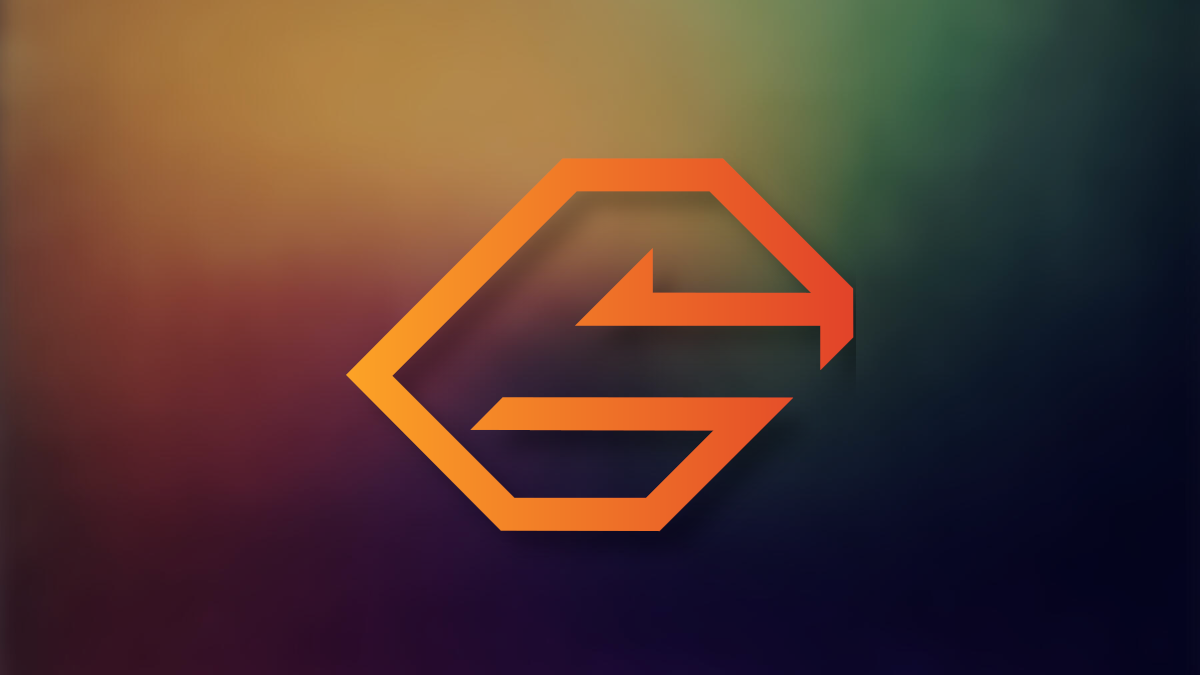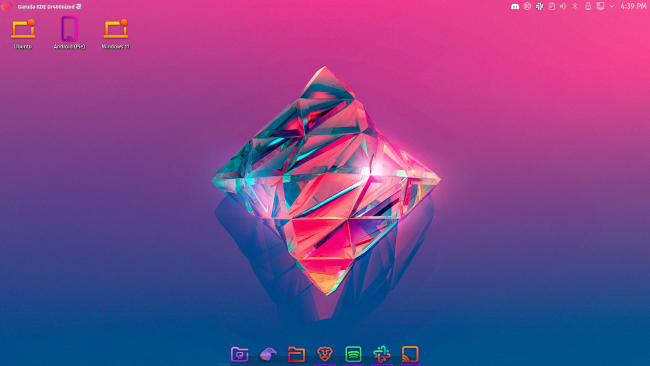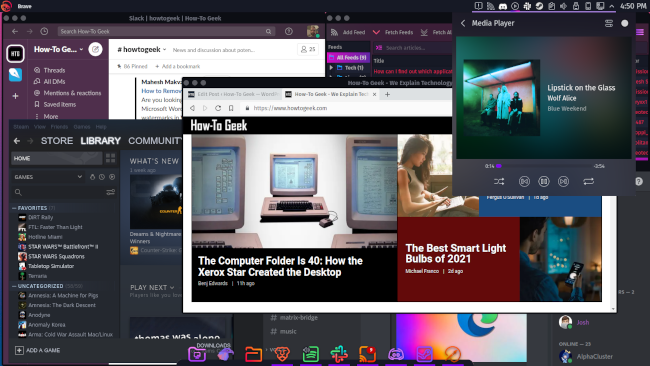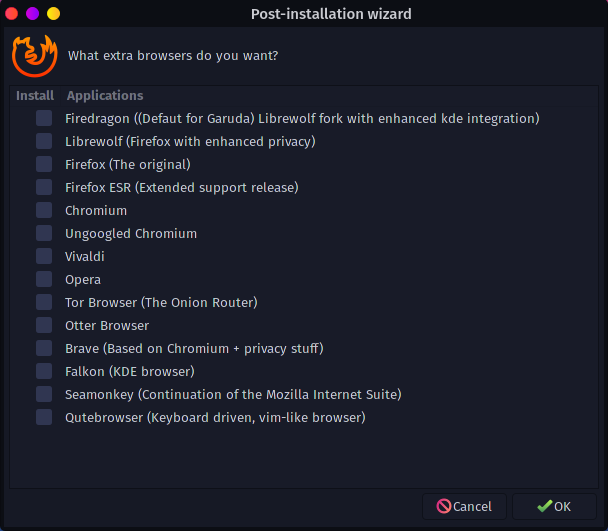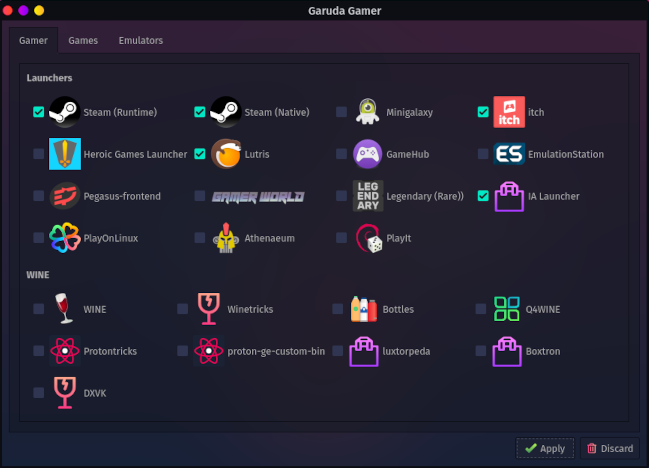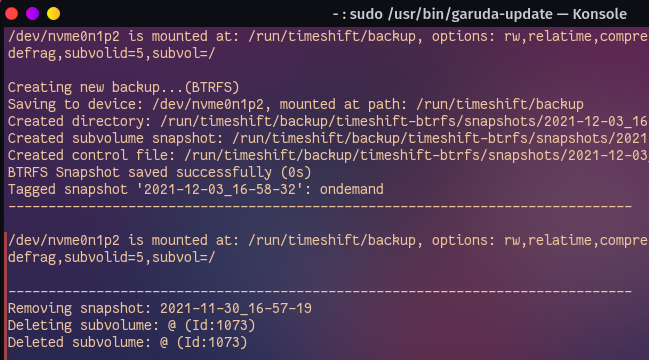Quick Links
Months after making Garuda Linux my daily driver operating system on my desktop PC, I still don't have any regrets. It's continued to be everything I look for in a Linux distribution (distro). Here's why.
Undeniable Beauty
There's no shortage of writers, streamers, and podcasters in the Linux world waxing poetic about Garuda's default theming, particularly the Dragonized edition with its vibrant neon colors. But it was indeed a huge draw for me. Just like in human attraction, appearance isn't everything---but it sure helps.
Its aesthetically pleasing appearance, though, doesn't say that much about Garuda in particular; you can copy the theming in most other distros. Instead, Garuda is a prime example of the potential innate to Linux and other open-source projects. Give free tools to someone with an eye for design, and art is sure to follow.
Made for Performance
Before Garuda, I was using Linux Mint. The decision to move away from Mint was based in part not on the distro itself, but on the hardware I was using. The laptop I had for years was lean on resources and therefore more useful to me with a lightweight distro like Mint. The standard edition of Garuda, however, isn't light. In fact, it assumes you're using a desktop PC with at least decent specs. It uses the "zen" kernel, a Linux kernel that's been optimized for higher workloads. So when I had a capable desktop machine, Garuda became a more realistic and appealing option.
The zen kernel combined with several other resource-managing utilities ensure I'm making the most of my rig's CPU and NVMe drive. System hangs are rare, and I've run into no significant problems with gaming and multimedia.
Easy Setup, Easier Maintenance
After installing the operating system, an app called Garuda Welcome will open, and you'll be invited to use their "setup assistant." Run it, and you'll be shown several lists of applications divided by category, and you'll be prompted to check the boxes for the software you want. The software offerings incorporate the Arch User Repository (AUR), giving you access to the best and up-to-date software (more on that later). At the end of the walkthrough, you'll see a script run in the terminal, automating the installation of everything you just selected. Other distros have similar "wizards," but this one was the most intuitive for me.
That said, I suspect the setup assistant would not be intuitive to someone new to the Linux ecosystem; the brief descriptions offered for software are mostly technical jargon. it's easy to navigate only if you already know what you want. Or, if you have tons of disk space and just want to check all the boxes, you can have a field day trying out new software.
Tools similar to the setup assistant are Garuda Gamer and the "System Components" tab of Garuda Assistant. You simply check the boxes for the stuff you want and uncheck the boxes for the stuff you don't. Clicking "Apply" runs a script installing everything you checked and uninstalling everything you unchecked.
Again, these tools are convenient and useful for experienced Linux users but potentially intimidating and unhelpful for beginners. To discover the best software that fits your needs, you might be better off searching the internet, or perhaps using the Pamac software manager. If you know what you want, though, these tools make setting up and customizing your system a breeze.
Switch to the "Maintenance" tab of Garuda Assistant, and with the click of a button, you can perform common system maintenance tasks, like running a system update or clearing the package cache. Garuda will also alert you and sometimes offer assistance with low-level configuration changes that are sometimes necessary with Arch.
On the Bleeding Edge, Yet Reliable
Another factor driving me away from Mint was the default package base, or rather, the versions of available packages. Mint, like Debian, makes stability a high priority, thoroughly testing apps for compatibility and reliability before pushing them to users. That's an honorable goal, to be sure. But it also means the latest features and other (non-critical) updates are slow to arrive on Mint. Your options then are either to subscribe to unstable or "testing" repositories or to build software from source.
With my job, though, fast access to the latest and greatest software is paramount. I don't have time to constantly find workarounds and scour alternative software sources. Garuda solves this problem for me by granting access to the most bleeding-edge packages by default, via the Chaotic-AUR repository. App source code gets packaged and pushed to my device soon, if not immediately, after publication.
If that sounds like a threat to the stability of those apps and my PC, that's because it is. So how can I rely on Garuda as a daily driver operating system? It's simple: Garuda creates a snapshot of your system every time you update that you can easily restore in the case of a catastrophic upgrade. Combine that with regular backups of personal files, and you have an operating system that you can rely on for daily use and for the latest software.
It's worth noting though that, so far, I've never once needed to restore a snapshot. I attribute that to updating frequently. Conventional wisdom will tell you that avoiding updates ensures a stable system, but the opposite is true for rolling release distros like Garuda.
Arch Without the Ouch
To be fair, nearly everything I like about Garuda is available, in one way or another, on most other Linux distros. Some are fairly comparable even without tweaks, like EndeavorOS and Manjaro. There's nothing wrong with Mint, either. In fact, I'd probably recommend Mint to anyone thinking of trying Linux for the first time. It's reliable, user-friendly, and has an active community.
What sells me on Garuda, though, is that it has the tweaks and automated routines I want by default. Other distros can require a lot of manual labor on my part that I frankly don't want to do. The benefits of an Arch-based system come at the cost of frequent system maintenance. But do I want to memorize all the necessary
pacman
flags and snapshot commands? No. I just want to get to work using the latest software---Garuda makes that possible.

